Käsespätzle is an Austrian and German dish that combines spätzle and cheese sauce. The more delicious cousin of mac and cheese, this Cheese Spaetzle is topped with onions and is delicious as either a side or a main dish.
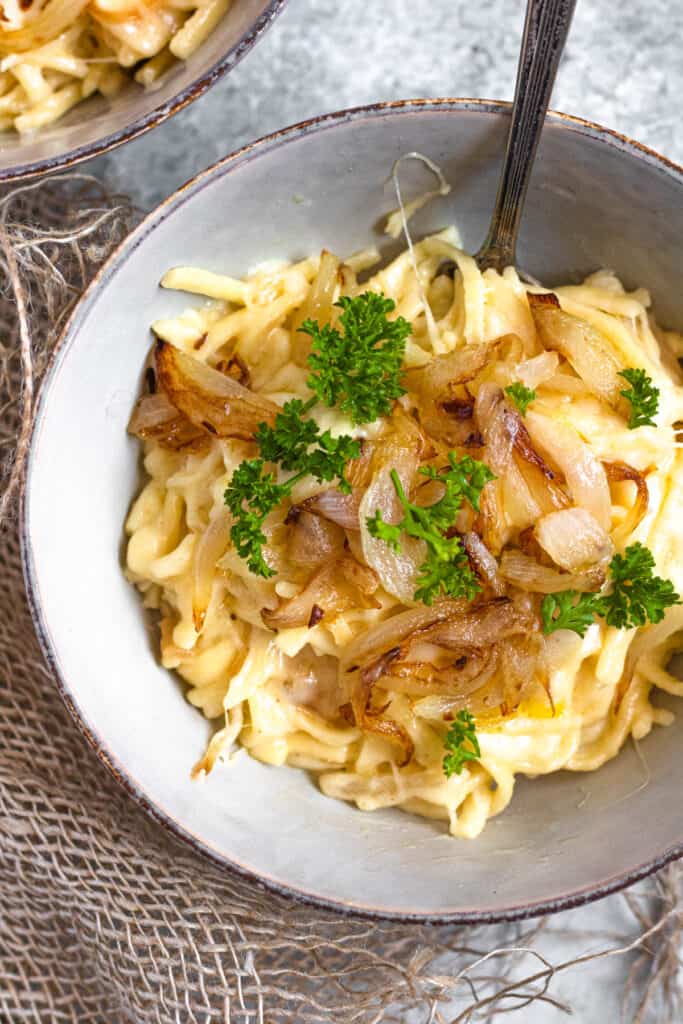
“Hello Reader! I try my hardest to research recipes as best as I can before posting to ensure I am representing each culture correctly. If this recipe is from your country and I have made a mistake or you have suggestions for how to make it more authentic, I would love to hear! Please leave a comment below letting me know what should be different, and I will rework the recipe. It is always my intention to pay homage and respect to each cultural dish that I cook. Thanks for reading!”
WOOOAAAHHHH baby. You gotta try this one.
Nothing’s better than a big bowl of creamy, delicious Homemade Macaroni and Cheese, right?
WRONG.
Mac and cheese is great (okay, especially this Macaroni Pie from Barbados), but man, this Käsespätzle blows any bowl of mac and cheese right out of the water.
I don’t know what it is, really, but somehow spätzle in cheese sauce is just so much more fun than noodles in cheese sauce.
Recipe Origins
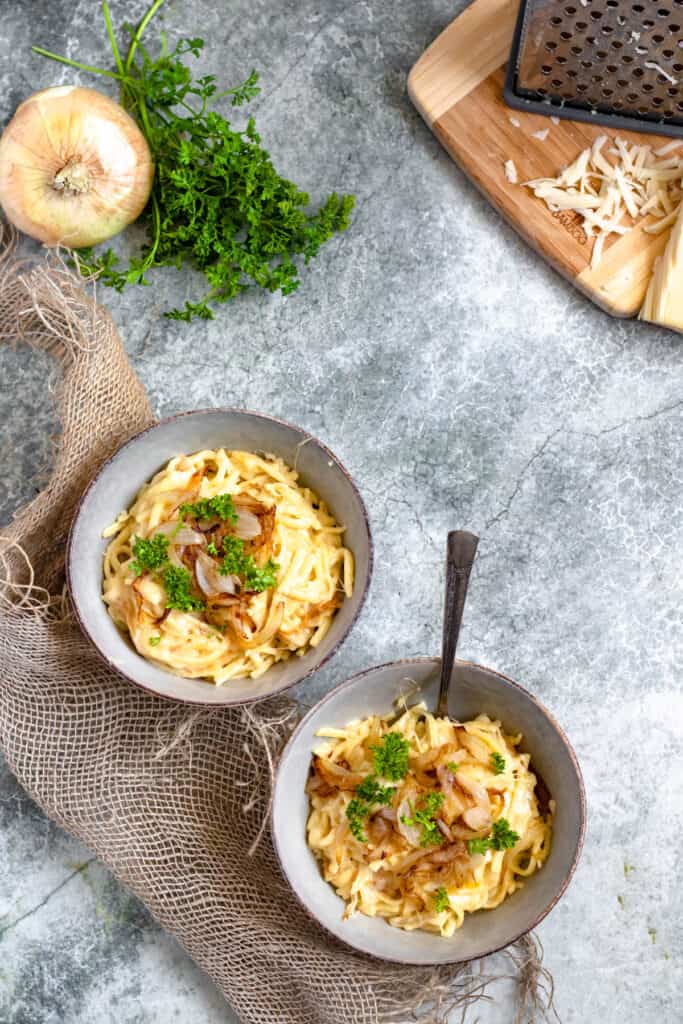
Käsespätzle originated in the Schwaben region, the southwestern region of Germany. Because Germany and Austria share a lot of cuisines, it is also commonly eaten in Austria as well!
The first record of Spaetzle was recorded around 1725. Though spaetzle is thought to be a lot older than this, there are no written records of the dish before this time.
Spätzle are a type of German and Austrian dumpling made from flour, egg, and salt. The dough for Spaetzle is similar to Italian pasta dough, though it’s a lot thinner. Because of this, the dough must be pushed through a spaetzle maker instead of being rolled out like pasta dough.
One theory about the name Spaetzle is that it comes from the Italian word “spezzato” which means “small pieces” or “broken”.
What Do I Need to Make this Recipe?
Ingredients
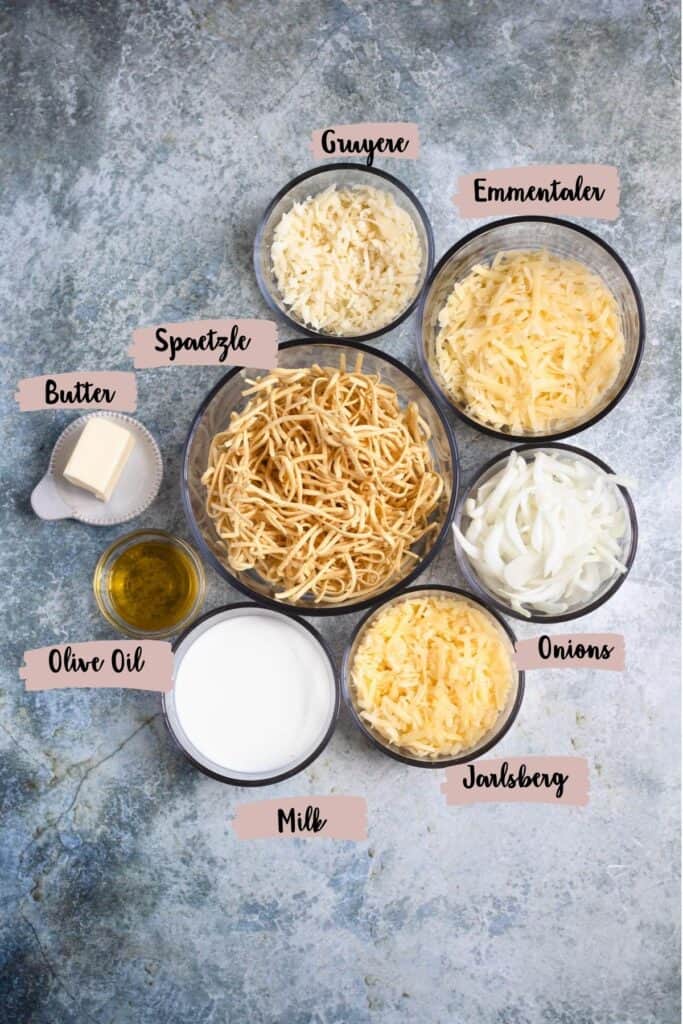
- Cheese: Emmenthaler, Jarlsberg, Gruyere
- Spaetzle: I used Bechtle brand in the long noodle style, but you can use whatever style you’d like
- Milk: Whole milk if possible, but 2% will also work
- Butter: Unsalted
- Onion: Sweet onion, sliced very thinly
- Olive Oil
Tools
This post may contain affiliate links which will share a small portion of your purchase with me at no additional cost to you.
- Large Pot/Small Pan (I love this Pots and Pans set from Cuisinart)
- Cheese Grater
- Cutting Board
- Knife
- Strainer
- Wooden Spoon/Rubber Spatula
How to Make this Recipe
[adthrive-in-post-video-player video-id=”1LNKO3SW” upload-date=”2021-08-03T19:32:29.000Z” name=”Kasespatzle” description=”Käsespätzle is an Austrian and German dish that combines spätzle and cheese sauce. The more delicious cousin of mac and cheese, this Cheese Spaetzle is topped with onions and is delicious as either a side or a main dish. ” player-type=”default” override-embed=”default”]
Step 1: Cook the Spaetzle
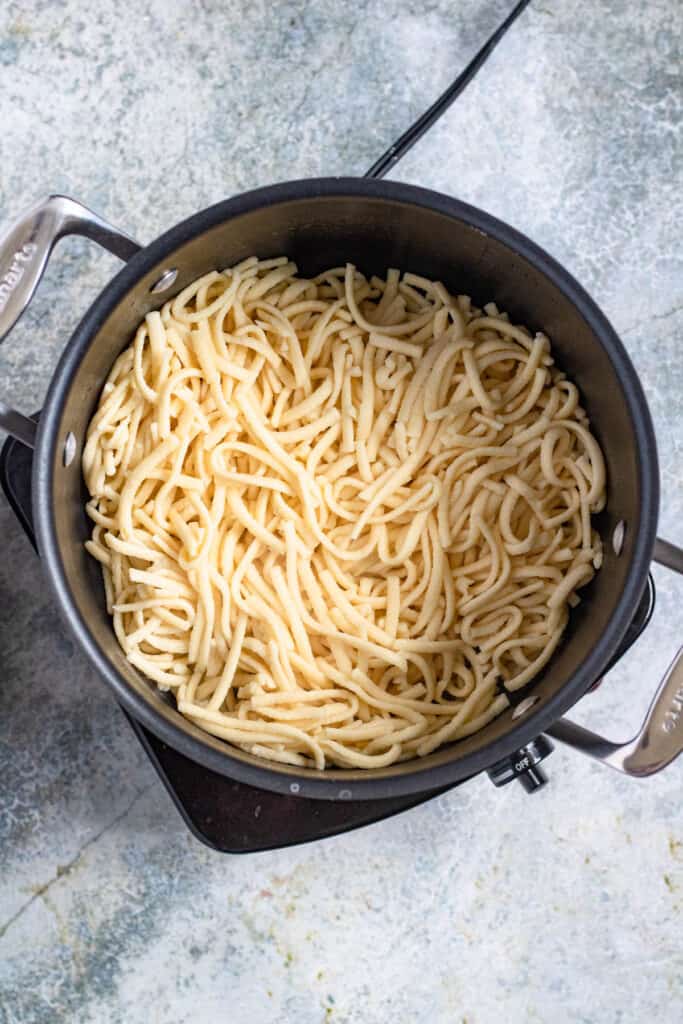
Boil enough water in a large pot to cook the spaetzle. Add some salt.
Once water is boiled, add spätzle and boil for about 10-15 minutes or until cooked through.
Step 2: Cook the Onions
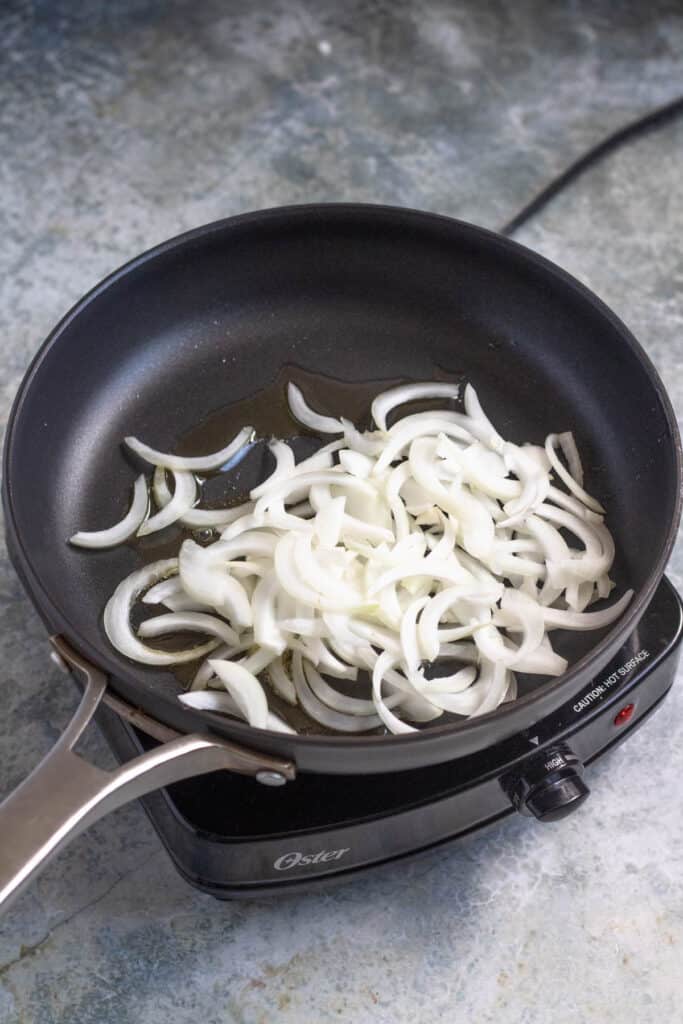
In the meantime, heat the olive oil in a small pan. Once heated, add sliced onions and saute until cooked. Alternatively, you can deep fry the onions in the oil if you’d like a crispier topping.
Step 3: Make the Cheese Sauce
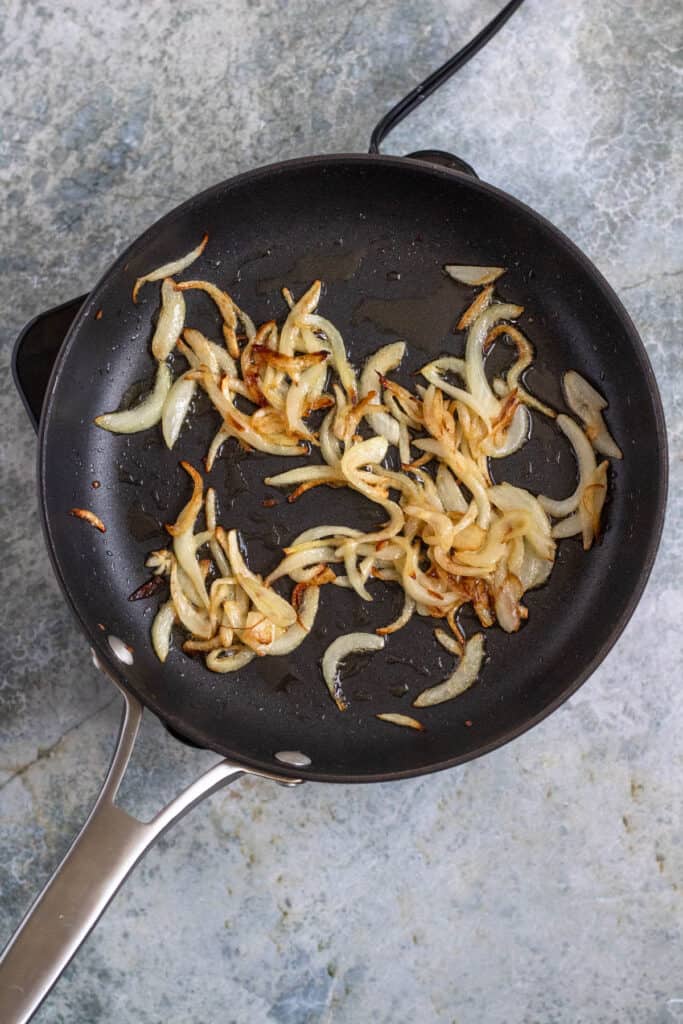
Once the spaetzle is cooked through, drain the water and return the spätzle to the pot.
Add all of the shredded cheese to the pot and add milk a little at a time. Mix until the cheese sauce becomes creamy, adding more milk as necessary.
Add most of the onions (about ¾) to the pot and combine into the spaetzle mixture. Use the remaining onion to top the spätzle. Enjoy!
Expert Tips
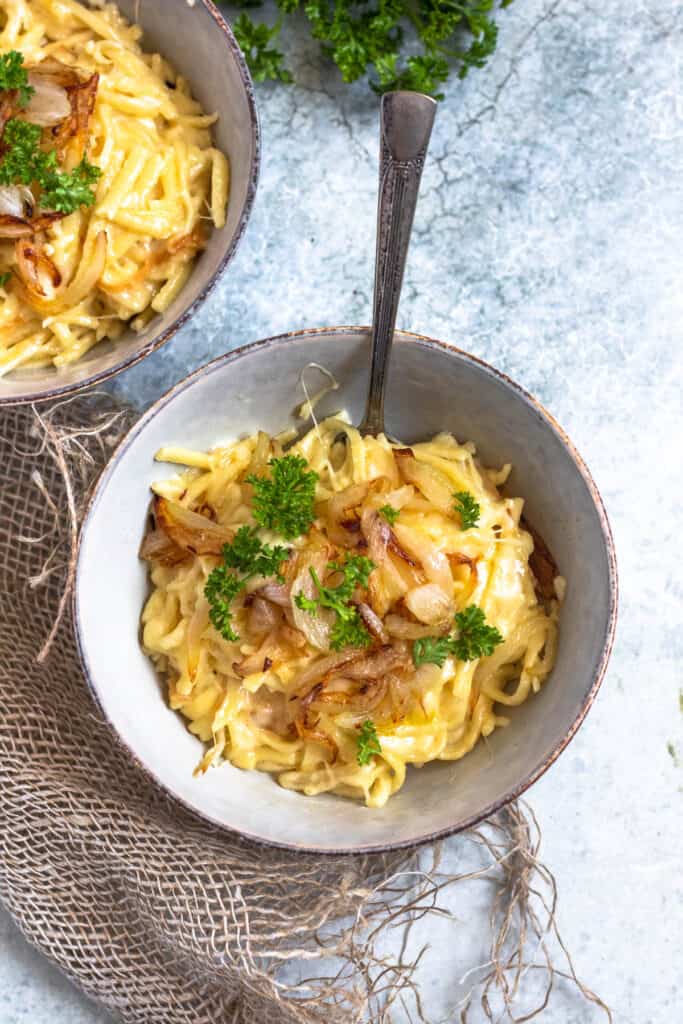
- In this recipe, I used a small, thin spaetzle type. If you’d prefer, you can use the traditional spaetzle shape
- I only added onions into this dish, but you can add anything into your Cheese Spaetzle that you think sounds delicious!
- I cooked the cheese in this recipe following the guidance of FearlessFresh by melting the cheese in the pot with the spaetzle. Another way to make this dish is by layering the spaetzle with the cheese and onions in a baking dish (omit the milk) and baking in the oven uncovered for 10 minutes at 400 degrees Fahrenheit
- You can also caramelize your onions if you don’t want them crispy. Caramelized onions (like in this Instant Pot French Onion Soup Recipe) are wonderful, and a great way to add some depth to the flavor of this dish.
- Add this to your own list of Popular Christmas Dishes in Germany to serve.
Recipe FAQs
Can I Make My Own Spaetzle?
I didn’t choose to make my own spätzle for this recipe. But if you do, it’s pretty easy! You can follow this recipe by German Girl in America for best tips.
The dough needs to be pushed through holes to create the right shape. You can either use a spätzle maker if you’re super fancy or just a colander if you’re not.
What Can I Add to this Dish?
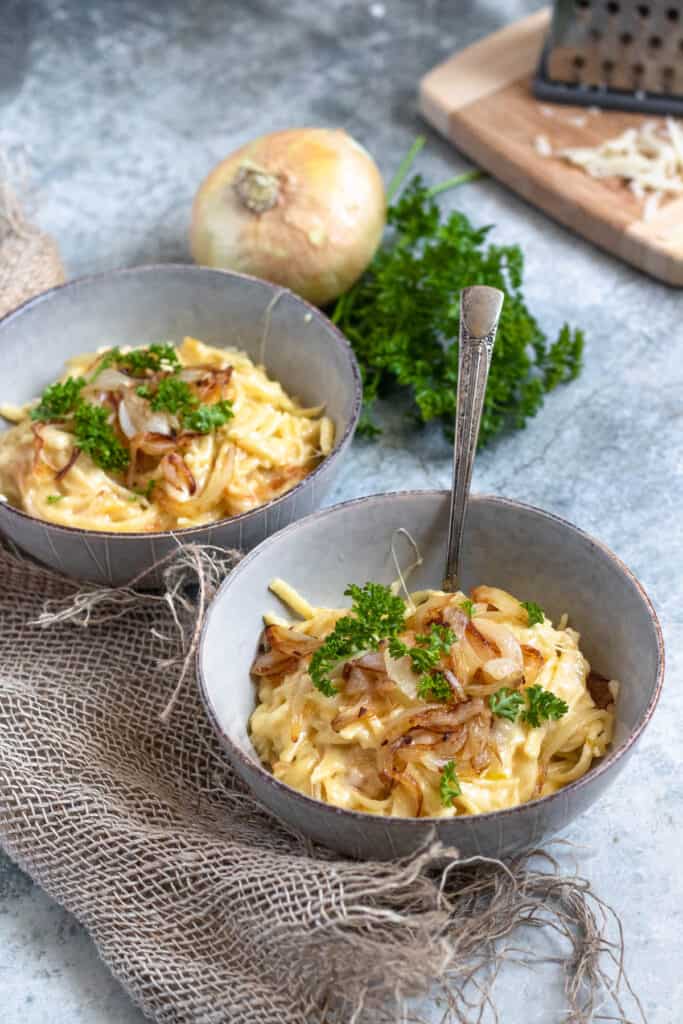
If you want to add extra toppings to this recipe, you can! It may not be totally traditional, but it will be delicious:
- Ham
- Bacon
- Peas
- Mushrooms
- Broccoli
- Carrots
- Parmesan Cheese
- Anything else that sounds good!
How to Store this Recipe
You can keep leftovers stored in an airtight container in the fridge for up to a week. Heat them up in the microwave or in the oven for best results. Enjoy!
If you make this recipe and like it, share a photo on Facebook or Instagram with the hashtag #theforeignfork! Then, don’t forget to check out these recipes I picked out just for you:
- Vegemite Pasta from Australia
- Armenian Mantiabour (Tortellini Soup) from Armenia
- Obatzda (German Beer Cheese Spread)
- Croque Monsieur Recipe from France
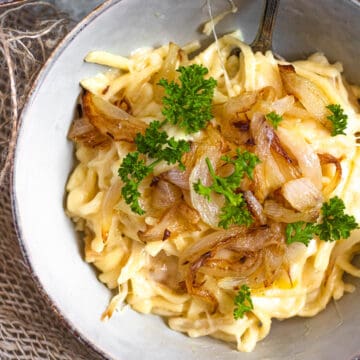
Spätzle with Cheese Sauce (Käsespätzle)
Equipment
- Pot(s)
Ingredients
- 2 tbsp olive oil
- ½ sweet onion, sliced thinly
- ½ lb Spätzle (I used Bechtle brand spätzle)
- ¾ cup whole milk, more depending on preference
- ¼ lb (4 ounces) emmentaler cheese, shredded (about 1 ¾ cups)
- ¼ lb (4 ounces) jarlsberg cheese, shredded (about 1 ½ cups)
- ⅕ lb (2.5 ounces) gruyere cheese, shredded (about ¾ cup)
Instructions
- Boil water in a large pot. Once water is boiled, add spätzle and cook for about 10-15 minutes or until cooked through.
- In the meantime, heat the olive oil in a pan. Once heated, add sliced onions and sautee until cooked. For truly delicious flavor, spend about 30-40 minutes slowly caramelizing the onions. Alternatively, deep fry the onions in vegetable oil if you'd like a crispier topping.
- Once spätzle is cooked through, drain the water and return the spätzle to the pot.
- Add all of the cheese to the pot and add milk a little at a time. Mix until the cheese sauce becomes creamy, adding more milk as necessary.
- Add most of the onions to the pot and combine into spätzle mixture. Use remaining onion to top spätzle. Enjoy!
Notes
Nutrition

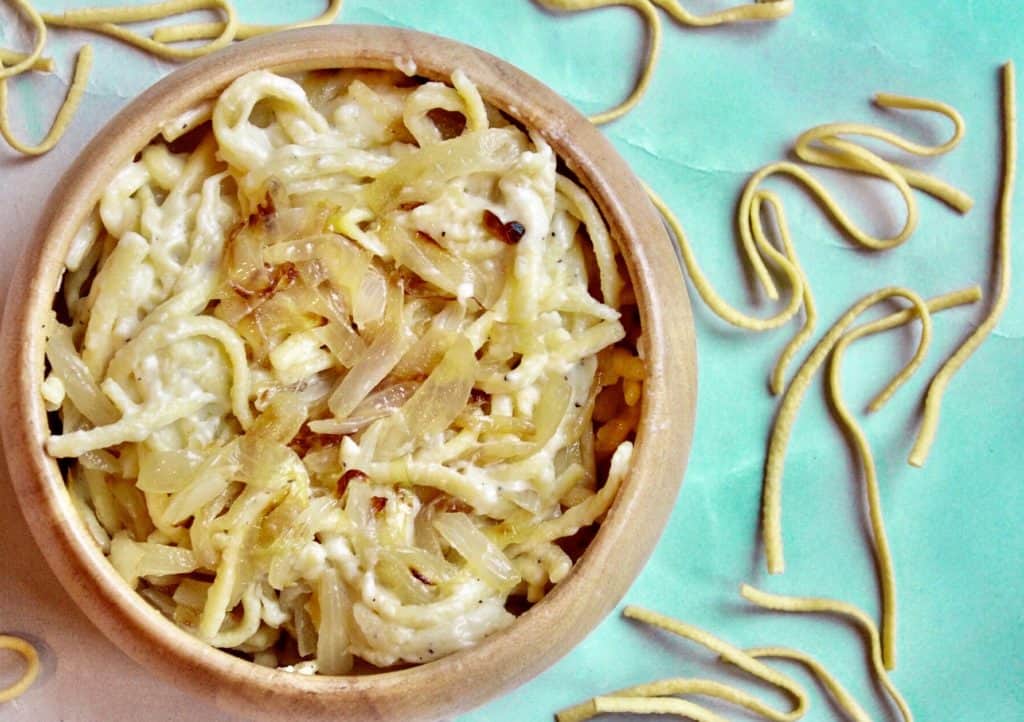



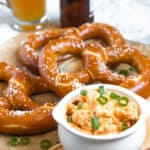
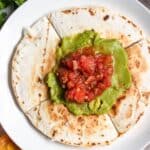
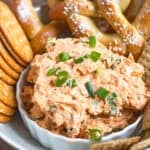




Katie Jo says
Where does the butter come into play? With the oil to saute the onion? Mixed in with the cheeses and milk? Looking forward to trying this recipe soon!
The Foreign Fork says
Whoops, thanks for pointing that out Katie! I just updated the recipe 🙂
Anne says
Spätzle are from Germany, not Austria
The Foreign Fork says
Germany and Austria share a lot of the same foods. I ate this dish while in Austria, which is why I decided to make it while cooking Austria!